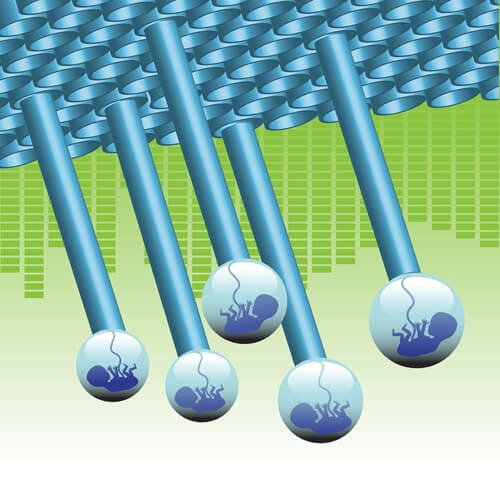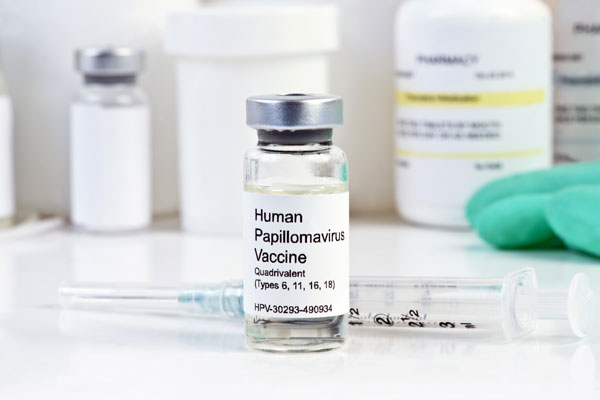
|
|
|
|
|
|
|
2053
Genetically engineered "designer babies" for the rich
The ability to manipulate DNA has come a long way since its discovery in 1953. A century on, wealthy parents now have the option of creating "perfect" babies in the laboratory. This is done by picking and choosing their best hereditary traits. Gender, height, skin, hair and eye colour – along with hundreds of other characteristics – can be programmed into the embryo prior to birth. The embryo is then grown in an artificial uterus.* The most advanced (and controversial) techniques involve manipulating the brain to improve the child's intelligence, behaviour and personality. Many conservative and religious groups decry what they see as the commercialisation of the human body.

Australia becomes the first country to eliminate cervical cancer
Cervical cancer is a cancer arising from the cervix, the lower part of the uterus in the human female reproductive system. The first known description of the illness was made by the Greek physician, Hippocrates, in 400 BCE. However, it was not formally identified as a sexually transmitted disease until 1834 and surgical treatments were not available until 1898. By the early 1900s, it was the biggest cancer killer of women in some countries including the USA.
In 1943, the Pap test was first generalised as a procedure, enabling doctors to detect cellular abnormalities that might be cancerous and begin treatment before they could spread. Over the following decades, the test was credited with driving down cervical cancer death rates in much of the developed world.
A link between human papillomavirus (HPV) and cervical cancer was identified in the 1970s when German virologist, Harald zur Hausen, demonstrated the presence of HPV DNA in cervical cancer cells and genital warts. However, it was not until the mid-1990s that the primary role of HPV in the development of cervical cancer was definitively confirmed. Subsequently, HPV was identified in 99.7% of cervical cancer specimens worldwide. Zur Hausen's breakthrough in medical science was important enough to earn him the Nobel Prize for Physiology or Medicine in 2008.
In the mid-1980s, an HPV vaccine was developed, in parallel, by Georgetown University Medical Center, the University of Rochester, the University of Queensland in Australia, and the U.S. National Cancer Institute. In 2006, the U.S. Food and Drug Administration approved the first preventive HPV vaccine, under the trade name Gardasil. This was 99% effective in protecting against the most common strains of HPV that caused cancer in women. Other versions of the vaccine became available in subsequent years, protecting against various strains.
While progress was being made in richer countries, cervical cancer remained a significant problem globally. During the early 21st century, it was both the fourth most common cancer and fourth most common cause of death from cancer in women. In 2012, an estimated 528,000 cases were reported and 266,000 deaths – about 8% of the total cases and total deaths from cancer. About 70% of cervical cancers occurred in developing countries and it was a leading cause of cancer death for women in low-income nations.
Australia was among the countries at the forefront of the fight against cervical cancer. In 2007, its government began a school-based vaccine program that virtually eliminated new infections of HPV for those who were immunised as young teenagers. In 2008, the Australian Cervical Cancer Foundation (ACCF) was founded with a goal to promote women's health "by eliminating cervical cancer and enabling treatment for women with cervical cancer and related health issues in Australia and in developing countries." Ian Frazer, co-inventor of the Gardasil vaccine, was a scientific advisor to the ACCF. The country had also developed a world-class screening program that was 100% effective at preventing cervical cancer for women who fully committed to it. A new vaccine was introduced in 2018 to target more virus strains of HPV that caused cancer.
In the 2010s, less than 1,000 cases of cervical cancer were being reported in Australia each year. This figure, alongside the mortality rate, continued to fall, reaching negligible numbers in subsequent decades. By the early 2050s, cervical cancer has been essentially eliminated in Australia – the first country to achieve this milestone – thanks to the combination of highly effective screening and vaccination programs.**
Following the example of Australia, universal testing and immunisation programs are now ubiquitous in the developed and most of the developing world, providing hope that the illness can be eliminated globally by the end of the century.

« 2052 |
⇡ Back to top ⇡ |
2054 » |
If you enjoy our content, please consider sharing it:
References
1 What
the World Will Look Like by 2050, Time:
http://www.time.com/time/arts/article/0,8599,1890927,00.html
Accessed 22nd October 2009.
2 Australia on track to become first country to completely eliminate cervical cancer, 9News:
https://www.9news.com.au/national/2018/03/04/07/30/australia-on-track-to-become-first-country-to-completely-eliminate-cervical-cancer
Accessed 21st April 2018.
3 "We are forecasting that over the next 30 to 40 years, rates of cervical cancer will drop from around the current 930 cases a year in Australia to just a few."
Cervical cancer could be eradicated within 40 years, Health Direct:
https://www.healthdirect.gov.au/blog/cervical-cancer-could-be-eradicated-within-40-years
Accessed 21st April 2018.
![[+]](https://www.futuretimeline.net/images/buttons/expand-symbol.gif)






